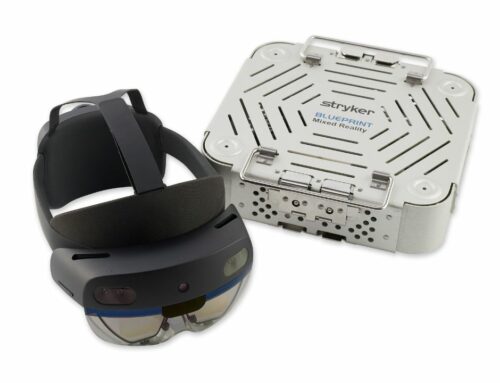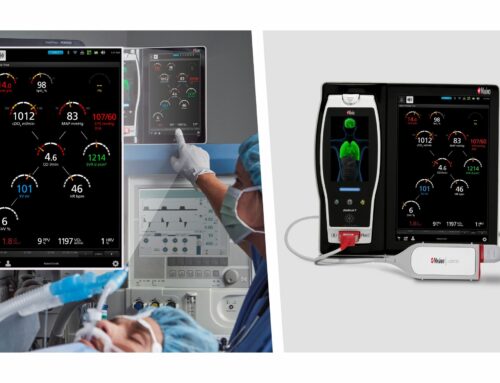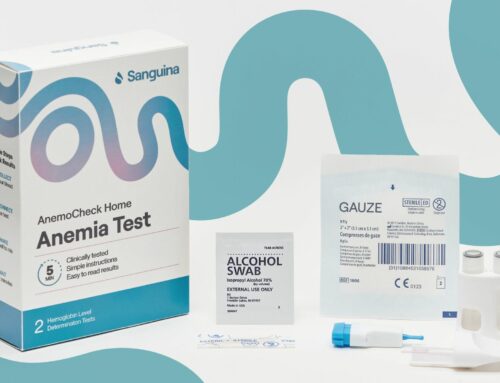By Jon Gingrich, CEO, Echosens North America |
Damage to the liver caused by chronic liver diseases, such as non-alcoholic fatty liver disease (NAFLD) and its more severe form non-alcoholic steatohepatitis (NASH), can lead to advanced fibrosis and liver cancer, liver transplantation, increased risk of cardiovascular events and all-cause mortality. NAFLD is one of the most common causes of liver disease in the United States, with experts estimating that about 24% of U.S. adults have NAFLD and about 1.5% to 6.5% of U.S. adults have NASH.
Fortunately, liver disease can often be reversed with early diagnosis and intervention. New guidelines from the European Association for the Study of the Liver (EASL), a professional association for individuals researching liver disease, points to the effectiveness of non-invasive tests (NITs).
EASL guidelines represent a significant advance for the non-invasive management of patients with liver diseases and an unprecedented level of recommendation for vibration-controlled transient elastography (VCTE) technology, including liver stiffness measurement (LSM) by transient elastography (TE), controlled attenuation parameter (CAP) and spleen stiffness measurement (SSM) as an additional NIT to further improve risk stratification and refine the risk of high-risk varices.
Other studies have shown that detecting and monitoring liver disease using VCTE is a non-invasive and quick way for clinicians to quantify the stiffness of liver tissue and estimate liver fat at the point of care.
NIT Technology
NIT technology is poised to serve as the cornerstone for measuring and monitoring liver disease across the liver care continuum and all population groups. As the NIT of reference, FibroScan, a VCTE tool that quickly and painlessly quantifies liver stiffness at the point of care, combines standardization, clinical performance and accessibility for early patient identification, in first-line after Fib-4, either in primary care, diabetology clinic or liver clinic, and for advanced liver disease patient management, portal hypertension and hepatocellular carcinoma (HCC) risk stratification.
EASL guidelines recommends VCTE technology for NAFLD/NASH, alcoholic liver disease (ALD), hepatitis C virus, including post sustained virologic response (PSVR), primary biliary cirrhosis (PBC)/primary sclerosing cholangitis (PSC) and autoimmune hepatitis (AIH), as well as in at-risk populations, such as patients with metabolic risk factors and/or harmful use of alcohol. All recommended cut-off values are clearly specified for LSM by TE.
VCTE technology represents a way forward, offering high value for comprehensive management of liver health in the battle against a global liver disease epidemic. This is important, given that the prevalence and associated costs of underdiagnosed liver disease is now linked to over $100 billion in annual direct costs.
Liver Disease Epidemic
The alarming rise in adult obesity rates in the United States and worldwide has led to more people experiencing liver damage and associated health issues. For context, in 2000, 30.5% of American adults had obesity, meaning they had a body mass index of 30 or higher. That rate increased through 2015-2016, helping to fuel related health issues like diabetes, cardiovascular disease and some cancers.
Recent data shows that the obesity rate reached 42.4% in 2017- 2018 – surpassing 40% for the first time. The impact of obesity on vital organs can be devastating, especially on the liver, causing insulin resistance that leads to buildup of blood sugar and increases the amount of free fatty acids circulating in the blood and inside the liver cells. This buildup of fat is very common in those with Type 2 diabetes, and increases the risk of liver fibrosis, cirrhosis, liver cancer and death.
Closer Look at Costs
In a recent retrospective analysis among Medicare Advantage plans, the annual cost of NAFLD was $9,062 for a new diagnosis and $5,363 for long-term management versus $4,111 per matched control.
Costs per patient and overall costs per year are the result of inpatient hospitalization and outpatient appointments, emergency department visits, organ transplantation, medical procedures or new diagnoses, new medications or changes to existing medications and mortality.
Estimates reveal that 357 million people will have NASH globally by 2030. Because NAFLD and NASH are so tightly intertwined with obesity, diabetes and lifestyle, a more proactive approach to patient engagement is required to support behavioral changes that will result in better outcomes across the co-morbid conditions affecting the individual patient.
Lifestyle Changes
For many patients, a 3% reduction in body weight through diet and exercise has been associated with reversal of steatosis and a reduction of greater than 7% may resolve NASH in many patients. Disease progression is typically slow, and patients can be managed well by primary care physicians. For this reason, a growing number of primary care physicians and specialists are adopting VCTE tools to battle the twin epidemics of liver disease and obesity.
The best choice is a VCTE tool that provides exam results to help monitor lifestyle modification. For example, FibroScan, a VCTE tool for early detection and monitoring liver health at the point of care, offers consistent quantitative results. This makes it possible to monitor fatty liver disease and provide feedback to patients regarding their efforts with diet and exercise. It’s also important to choose a VCTE tool that integrates with EHRs for automatic upload and storage of the exam results to save time, secure data and improve the patient’s follow-up.












